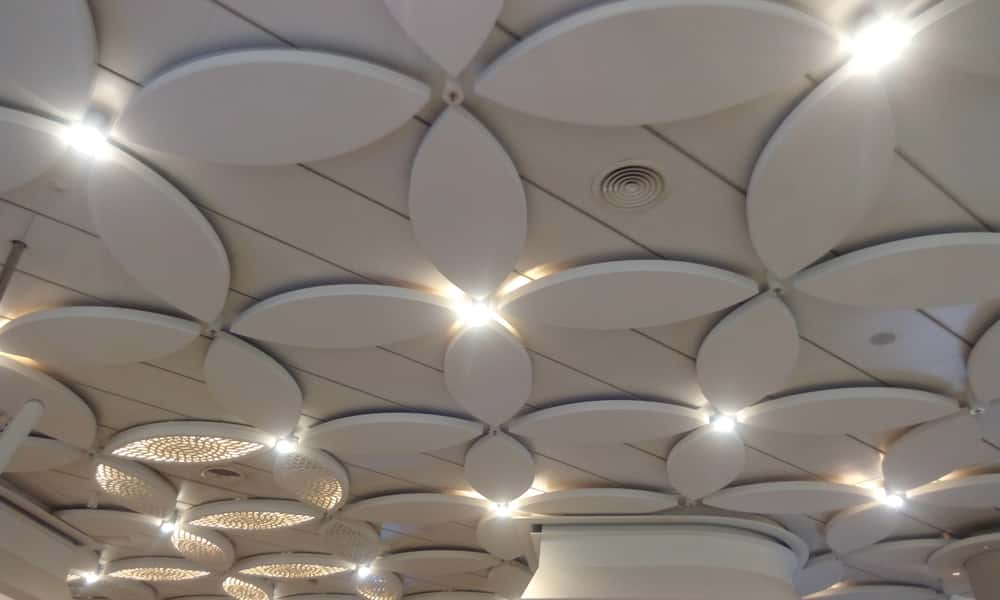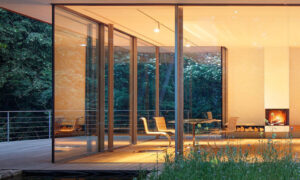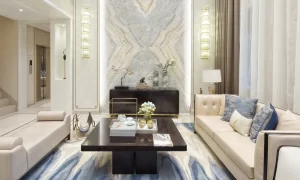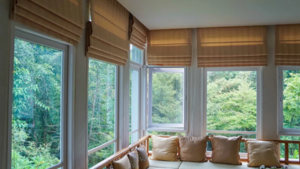Does Ceiling Color Really Matter? How It Shapes Light and Space in a Room

When it comes to designing a space, walls, flooring, and furniture typically steal the spotlight. But there’s one crucial element that often gets overlooked—the ceiling. The color of a ceiling does more than serve as a finishing touch; it plays a vital role in shaping the perception of space, influencing light distribution, and ultimately affecting the ambiance of a room. Understanding the nuances of ceiling color can help you craft an environment that feels open, intimate, expansive, or cozy, depending on your desired aesthetic.
Color has a profound impact on the way light behaves in a room. Lighter shades reflect more light, dispersing it evenly and brightening the space. This makes ceilings appear higher, lending an airy and open feel. In contrast, darker hues absorb light, reducing reflectivity and creating a sense of intimacy. The interplay of light and ceiling color can significantly influence how natural and artificial lighting interact within a room, impacting everything from mood to perceived spaciousness.
Lighter Tones for an Airy Feel
White and pastel-colored ceilings are widely favored for their ability to enhance brightness. Soft whites, creams, and pale blues contribute to an open, breezy atmosphere by reflecting both natural and artificial light. When paired with light-colored walls, they create a seamless transition, minimizing boundaries and giving the illusion of a more expansive space. This is particularly beneficial in smaller rooms, where maximizing light reflection can make a significant difference in how large the room feels.
The Power of Darker Ceilings
Contrary to popular belief, darker ceiling colors are not necessarily a design faux pas. In fact, deep shades such as charcoal, navy, or forest green can create a dramatic and enveloping ambiance. They lower the perceived height of a ceiling, which makes a large or cavernous space feel cozier and more intimate. This technique is often employed in dining rooms, libraries, and home theaters where a sense of warmth and enclosure is desired. However, when using dark colors, proper lighting is key—strategic placement of sconces, recessed lighting, or uplighting can prevent the room from feeling oppressive.
Monochromatic vs. Contrasting Designs
The transition between wall and ceiling color also plays a crucial role in visual perception. A monochromatic approach, where the ceiling and walls are painted the same light shade, can make a room appear taller by eliminating visual breaks. Conversely, a sharp contrast—such as white walls with a colored ceiling—draws the eye upward, emphasizing the ceiling and potentially making a room feel smaller. Subtle transitions, like using a ceiling color one or two shades lighter than the walls, create depth without overwhelming the space.
Warm vs. Cool Ceiling Colors
Undertones have a profound effect on a room’s overall atmosphere. Warm hues, like creamy whites, pale yellows, or light beiges, add a cozy and inviting quality, making a space feel welcoming. Cool-toned ceilings—soft blues, grays, or even a muted lavender—enhance a sense of calm and serenity, particularly in bedrooms or bathrooms. Choosing the right undertone ensures that the ceiling complements the rest of the room’s decor rather than clashing with it.
Glossy, Matte, and Textured Ceilings
Beyond color, the finish of a ceiling affects how light interacts with the space. High-gloss finishes reflect maximum light, enhancing brightness and making a space feel larger. However, they can also highlight imperfections, making them a better choice for flawless, well-prepared ceilings. Matte finishes, on the other hand, absorb more light, reducing glare and creating a more subdued, modern aesthetic. Textured ceilings, such as those with a stucco or coffered design, introduce depth and interest, subtly influencing how the ceiling interacts with light.
Ceiling Color in Different Room Types
Each space in a home has its unique requirements when it comes to lighting, ambiance, and perception of space. Carefully choosing ceiling colors for various rooms ensures they serve their intended purpose while maintaining an aesthetically pleasing and harmonious design.
- Living Rooms and Open Spaces. In open-concept layouts, ceiling color can help unify or define spaces. A consistent, light-toned ceiling creates continuity, making an area feel larger and more fluid. For areas that require definition—such as a reading nook or dining section—using a slightly darker shade or subtle accent can add character without overwhelming the design.
- Bedrooms benefit from ceiling colors that enhance relaxation. Soft neutrals and cool pastels promote tranquility, while deeper hues like slate or dusky blue can foster a cocoon-like feel. In smaller bedrooms, opting for a monochromatic scheme helps avoid a boxy appearance, while subtle contrasts can add an elegant touch.
- Kitchens and Dining Areas. Since kitchens are typically bustling with activity, a bright ceiling keeps the space feeling fresh and energetic. White or light reflective tones prevent the room from feeling dim, especially in areas without abundant natural light. In contrast, dining rooms can handle deeper ceiling tones, creating an intimate dining experience akin to upscale restaurants.
- In bathrooms, a light ceiling color works well to amplify natural light and maintain an airy aesthetic. Soft blues or muted seafoam greens complement water-inspired themes, enhancing a spa-like ambiance. If the bathroom has limited lighting, a slightly reflective finish can help bounce light around the space.
When to Experiment with Unconventional Colors
While neutrals dominate ceiling color selections, bold choices can make a striking impact. Black ceilings lend a sophisticated edge to contemporary spaces, deep jewel tones can infuse personality, and even soft metallic finishes add an element of luxury. The key to making bold ceiling colors work lies in balance—keeping surrounding elements lighter or neutral to prevent visual overwhelm.
Ceiling color is not merely an afterthought—it is a fundamental aspect of interior design that can dramatically alter a room’s ambiance, brightness, and perceived dimensions. Whether aiming for an expansive, airy feel or a warm, cocooning atmosphere, thoughtful ceiling color selection can make all the difference. By considering factors like reflectivity, contrast, and undertones, you can harness the power of ceiling color to craft a space that feels just right. The next time you refresh your interiors, don’t forget to look up—your ceiling might just be the key to unlocking your room’s full potential.









